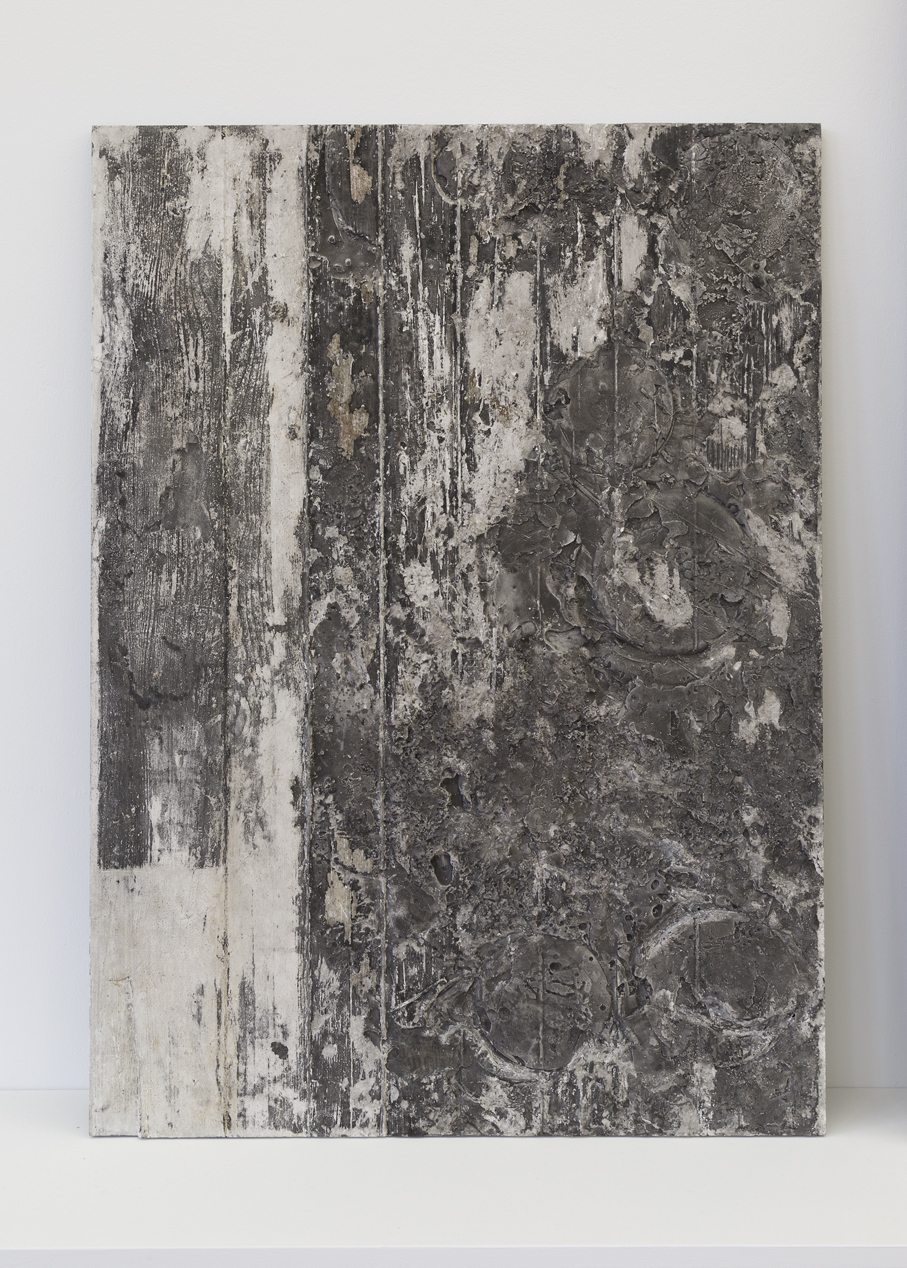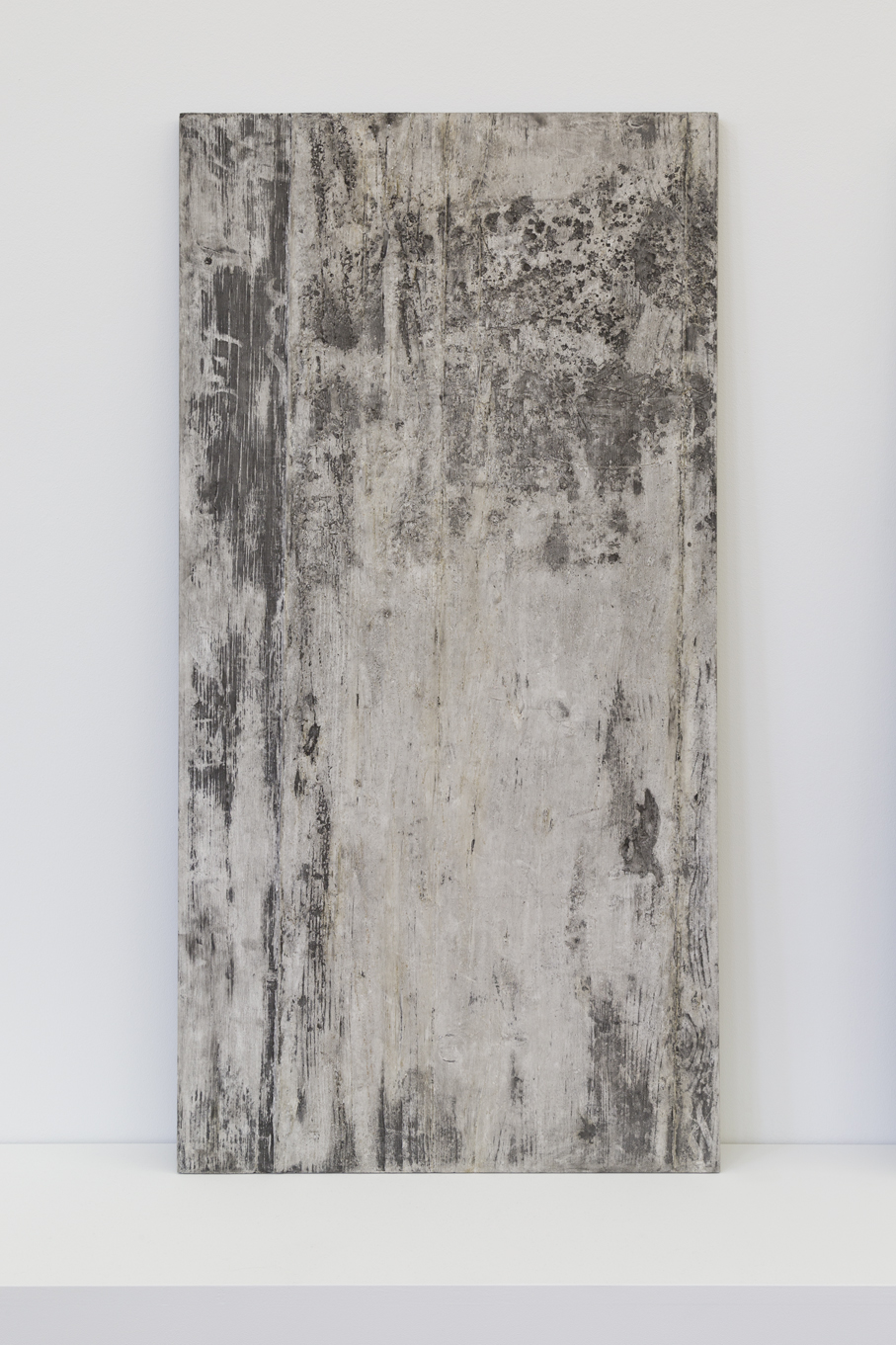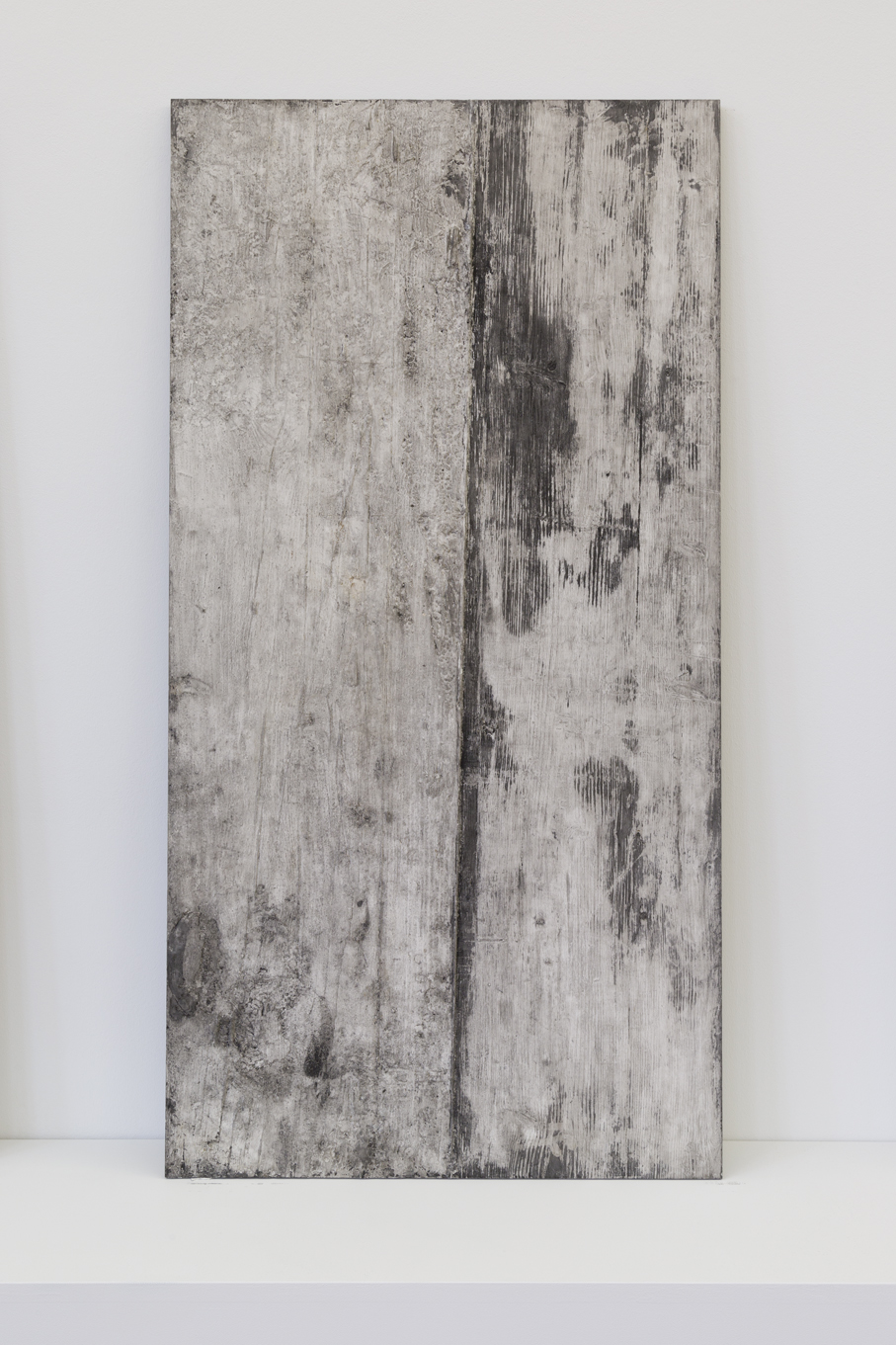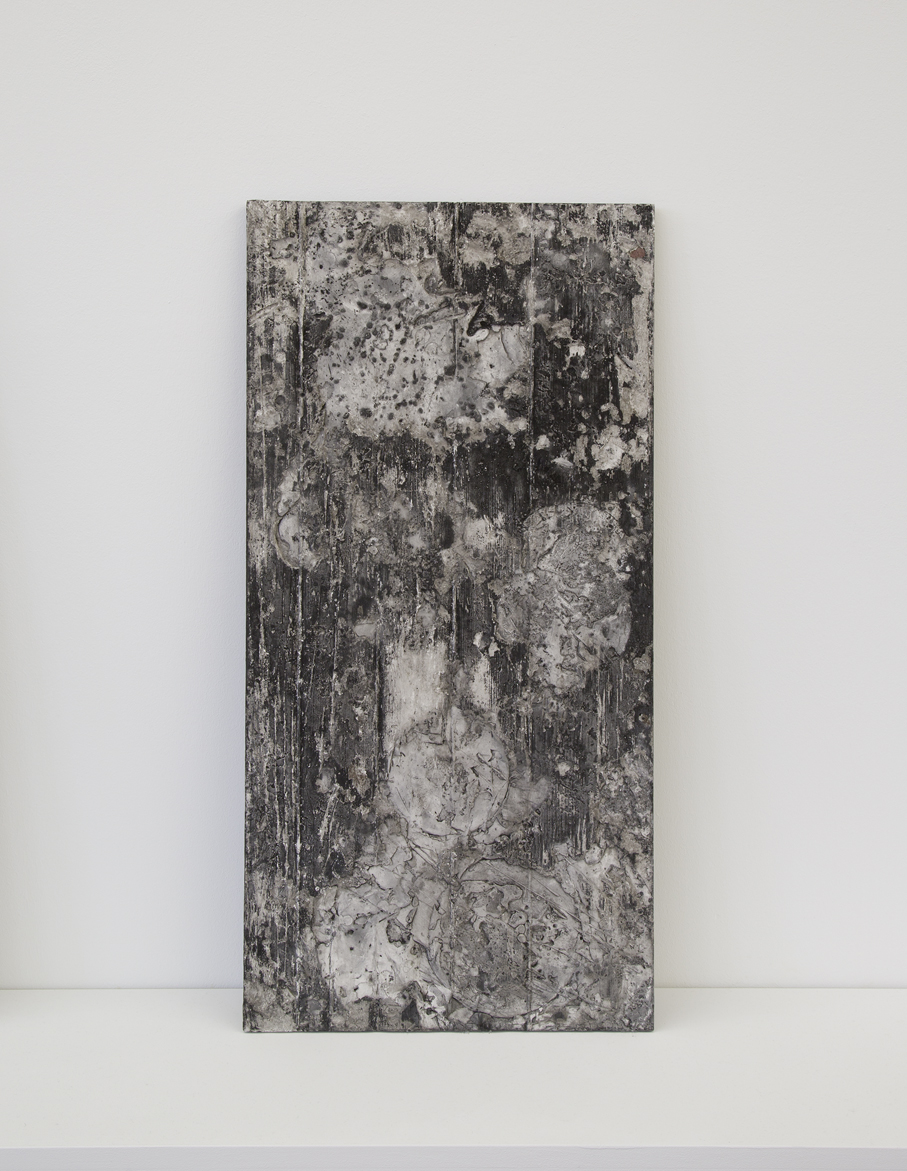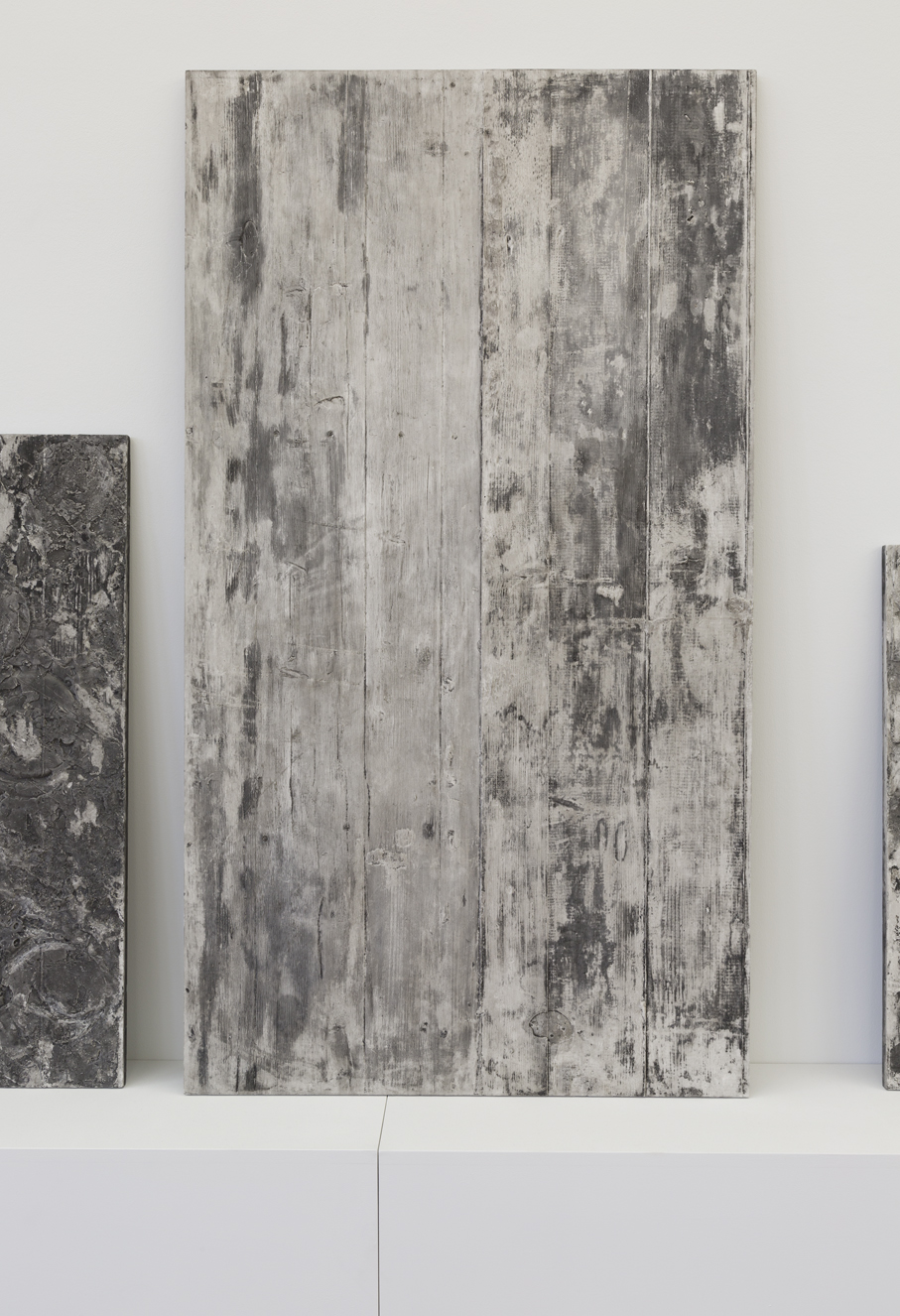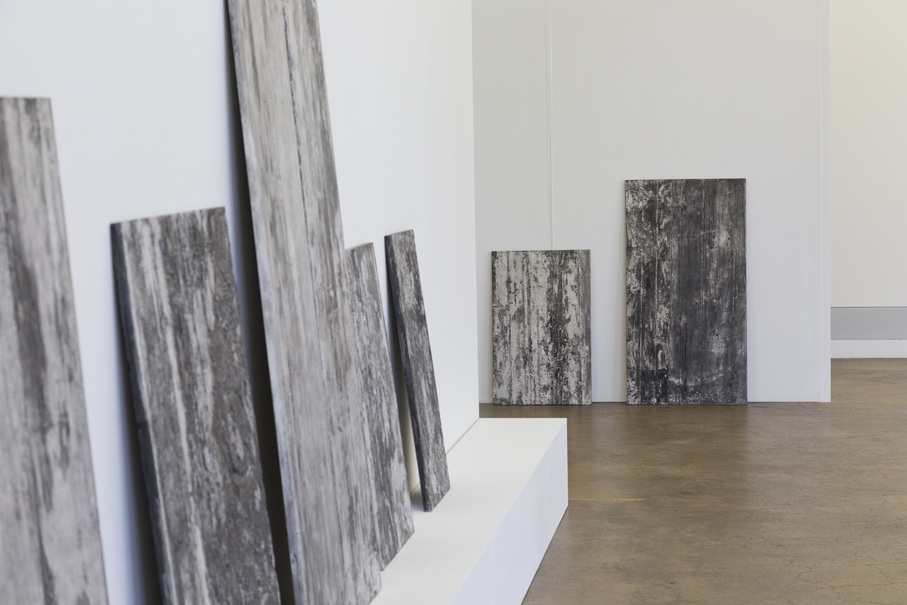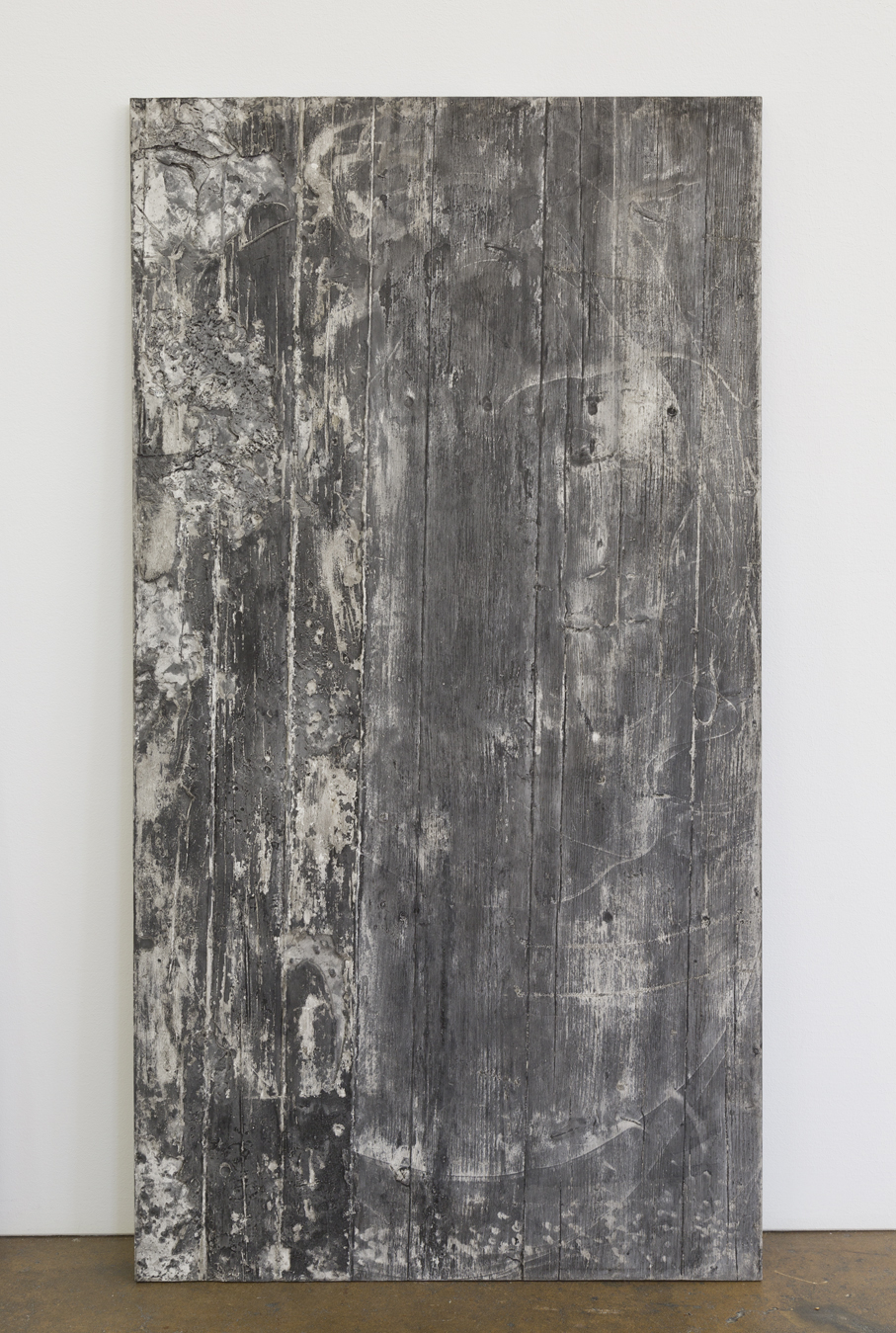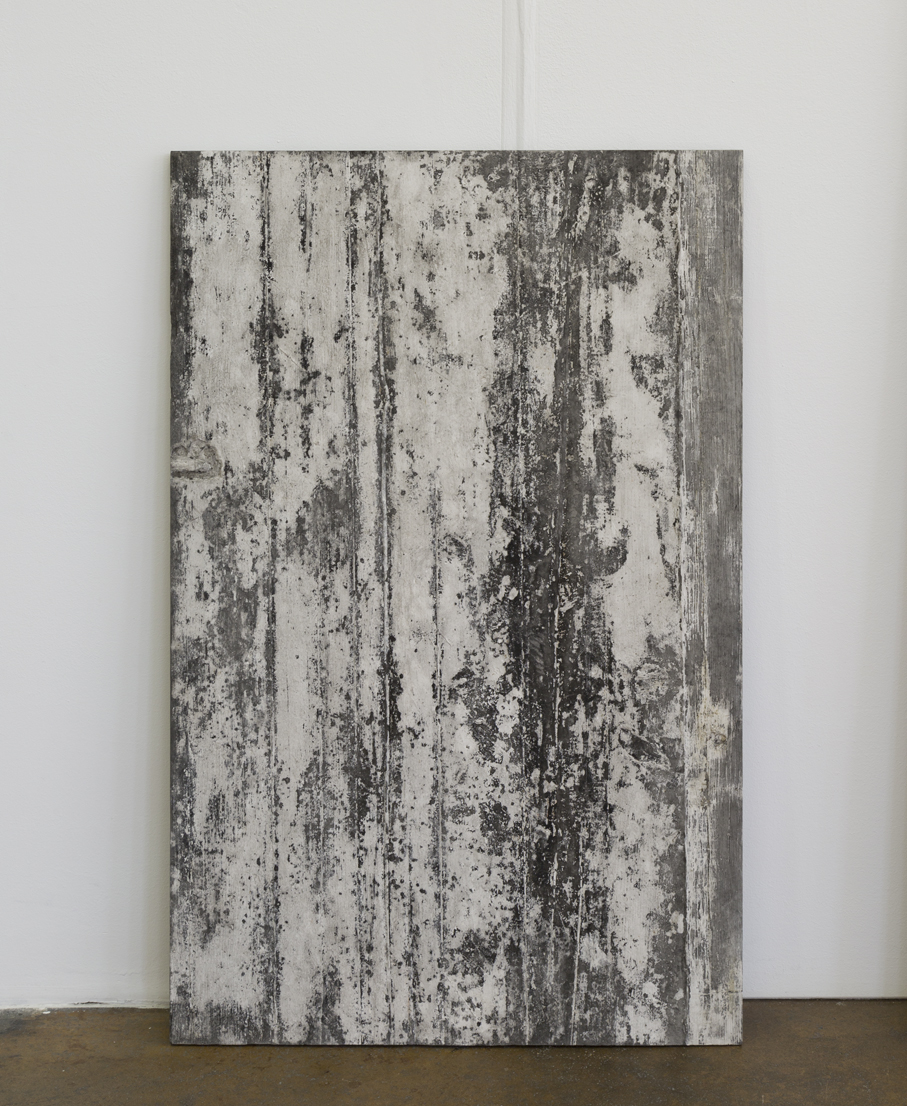TAFEL
2014/15
A series of massive relief-cast panels was developed starting from found formwork panels which had been used as working tables in technical production. These working bases were covered with traces of physical impact and sedimentations of used material, the remains of that which had been crafted on them. The tactile, baroque presence of the working traces in the piece of material and the simultaneous absence of the work as a specific operation and knowledge triggered a multistage process of appropriation and reevaluation.
Direct (negative) casts of the found formwork panels‘ surfaces were made from plaster. The raw cast pieces where then coloured, the fat content of the plaster (remains of the release agent) defining whether the liquid pigment would be absorbed or repelled. Within the precisely defined technical procedures applied, an important part of unpredictability and empirical research remained.
The method of the direct (negative) cast is documentary as much as it is inventing, as all shapes are replaced by their counterpart through direct impression. Bodies of matter turn into voids, holes turn into bumps. The impossibility of imagining what was before, the fragmentation and recombination within new formats and the overlying of a quasi-archaeological document by a paintinglike layer which escaped any purposeful design encouraged the loss of a conservational perspective and activated the material itself. Another manual working process is inscribed in the new bodies of material and replaces the work which was lost in the original found formwork panels.
Casting plaster, Indian ink | 11 objects: 144 x 80x 2 cm, 115 x 68x 2 cm, 115 x 60 x 2 cm, 115 x 60 x 2 cm, 115 x 58 x 2 cm, 115 x 58 x 2 cm, 94 x 68 x 2 cm, 78 x 50 x 2 cm, 78 x 50 x 2 cm, 78 x 50 x 2 cm, 78 x 32 x 2 cm
Exhibition view: akku Kunstplattform, Emmenbrücke, 2017
